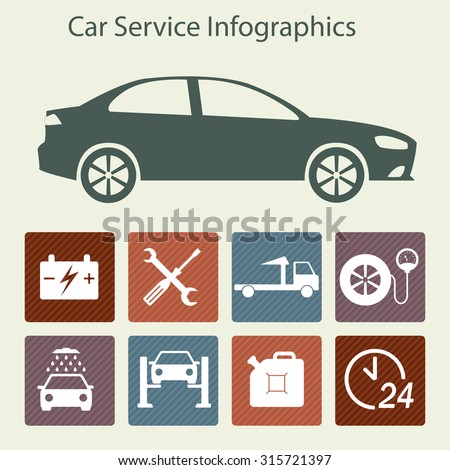Decoding Your Vehicle'S Warning Indicators: What They Genuinely Signify
Decoding Your Vehicle'S Warning Indicators: What They Genuinely Signify
Blog Article
Web Content By-Vinson Torres
When you're behind the wheel, those beautiful warning lights on your dashboard can be a bit perplexing. Do you understand what they're attempting to tell you about your vehicle's wellness? Comprehending the relevance of these lights is vital for your safety and security and the durability of your vehicle. So, the next time one of those lights pops up, would not you want to understand its message properly and take the required actions to resolve it?
Common Caution Lights and Interpretations
Identify usual caution lights in your cars and truck and comprehend their meanings to make sure secure driving.
One of the most typical warning lights include the check engine light, which signifies problems with the engine or discharges system. If car headlight detailing begins, it's essential to have your lorry checked promptly.
The oil pressure cautioning light indicates low oil pressure, needing instant focus to stop engine damages.
A flashing battery light might recommend a faulty charging system, potentially leaving you stranded if not addressed.
carvaletnearhowickaucklandprices tracking system (TPMS) light notifies you to reduced tire pressure, affecting car stability and fuel effectiveness. Disregarding this could bring about risky driving problems.
The abdominal muscle light indicates a problem with the anti-lock stopping system, compromising your ability to quit promptly in emergencies.
Finally, the coolant temperature level cautioning light warns of engine overheating, which can cause severe damages otherwise fixed promptly.
Understanding these typical warning lights will certainly help you address problems without delay and preserve safe driving problems.
Significance of Prompt Attention
Understanding the typical warning lights in your vehicle is just the first step; the importance of without delay addressing these warnings can not be highlighted sufficient to guarantee your security when traveling.
When a caution light illuminates on your dashboard, it's your car's way of communicating a possible concern that needs attention. Overlooking these warnings can lead to a lot more serious problems in the future, compromising your safety and security and potentially costing you much more in repairs.
Prompt focus to alerting lights can protect against failures and accidents. As an example, a blinking check engine light might indicate a misfire that, if left neglected, can cause damage to the catalytic converter. Resolving this promptly can save you from a costly repair work.
Similarly, car groomer warning light may signify reduced brake fluid or worn brake pads, essential parts for your safety and security when driving.
DIY Troubleshooting Tips
If you discover a warning light on your dashboard, there are a few do it yourself fixing pointers you can attempt prior to looking for professional aid.
The very first step is to consult your automobile's handbook to understand what the particular caution light shows. In some cases the problem can be as straightforward as a loosened gas cap triggering the check engine light. Tightening the gas cap might fix the issue.
Another common problem is a low battery, which can cause various advising lights. Inspecting the battery links for deterioration and ensuring they're safe may fix the issue.
If a caution light persists, you can attempt resetting it by disconnecting the car's battery for a couple of minutes and after that reconnecting it. In addition, inspecting your vehicle's liquid levels, such as oil, coolant, and brake fluid, can aid fix warning lights connected to these systems.
Verdict
Finally, recognizing your automobile's caution lights is necessary for maintaining your lorry running efficiently and securely. By promptly attending to these alerts and knowing what they suggest, you can avoid costly repair services and possible malfunctions.
Bear in mind to consult your cars and truck's guidebook for specific information on each cautioning light and act accordingly to make sure a hassle-free driving experience.
Remain educated, stay risk-free on the road!
